 AMD’s rivalry with Intel dates back decades. And while Team Red has nearly always been the underdog, the smaller company has its fair share of CPU firsts.
AMD’s rivalry with Intel dates back decades. And while Team Red has nearly always been the underdog, the smaller company has its fair share of CPU firsts.from Articles Tom's Hardware https://ift.tt/2lGqw2y
via IFTTT
 AMD’s rivalry with Intel dates back decades. And while Team Red has nearly always been the underdog, the smaller company has its fair share of CPU firsts.
AMD’s rivalry with Intel dates back decades. And while Team Red has nearly always been the underdog, the smaller company has its fair share of CPU firsts. Here are the best gaming CPUs for the money. These processors offer the best performance at their price and are suitable for overclocking.
Here are the best gaming CPUs for the money. These processors offer the best performance at their price and are suitable for overclocking. Priced near the top of the budget for CPU cooling , the MA620P offers dual RGB fans and remarkably good looks. We find out if it has the performance to match.
Priced near the top of the budget for CPU cooling , the MA620P offers dual RGB fans and remarkably good looks. We find out if it has the performance to match.We have previously explored the importance of memory scaling within AMDs Ryzen CPUs: the question being answered today is how much of an effect on performance does the memory frequency have when Zen is paired with AMD’s own Vega graphics core. We run a complete suite of tests on AMD's Ryzen 3 2200G ($99) and Ryzen 5 2400G ($169) APUs with memory speeds from DDR4-2133 to DDR4-3466 using a kit of G.Skill Ripjaws V.
While it may seem as if we just got through a major Intel processor refresh (because we did), the latest rumors out of WccfTech suggest that Intel’s 9000 series of Core processors isn’t far off.
The outlet claims to have come across marketing materials and product names for a number of upcoming Intel processors, namely the Core i9 line of CPUs, which will join the mainstream lineup on Intel’s upcoming Z390 chipset for general-use and gaming PCs.
This move will reportedly bring octa-core processing to the mainstream line of Intel chips for the first time, supporting a previous rumor of the 8-core Coffee Lake chip due in September. Here’s the line of processors the outlet claims to have found:
You’ll immediately notice three things about this supposedly leaked lineup: first, that there is no Core i3 option listed. As the outlet points out, this could either be Intel phasing out the product from its Core line of processors, or that it will release at a later date than these chips. The second thing you may notice is that the Core i5 option has no hyperthreading.
Finally, there is no quad-core part listed here, for the first time in an Intel processor lineup. That is, unless a 4-core Intel Core i3 part is waiting in the wings.
WccfTech’s findings continue to claim that the Z390 chipset is not that far advanced beyond the existing Z370 chipset that launched late last year to support the first Coffee Lake desktop processors. However, they will bring features introduced to the latest H-series entry-level platform earlier this year.
Those features include Intel 802.11ac Wi-Fi, Bluetooth 5.0, a native Intel Wi-Fi adapter and support for up to six USB 3.1 (Gen 2) ports. Currently, motherboard makers must source those arguably crucial features from third-party suppliers to include them on Z370 motherboards.
If you’re already mourning the loss of quad-core Intel chips for whatever reason, you might want to hold fire. It’s more likely that quad-core will find its way into even lower-powered processors over time, if not found within a Core i3 option yet to be uncovered.
Simply put, Intel would be throwing away money if it neglected to find some application for quad-core processing. At any rate, all of this should be considered rumor (albeit from an outlet with a strong track record) until word is heard from Intel itself – or even more irrefutable leaks show themselves.
Welcome to our list of the best SSDs for mining in 2018. When thinking of mining cryptocurrencies such as Bitcoin and Ethereum, buying a solid state drive may not be high on your list of priorities.
However, once you've bought the best GPU for mining, along with the best motherboard and best CPU for mining, then you should definitely consider a fast and dependable SSD to help complete your mining rig.
You don't need to buy one with huge amounts of storage, which means you can keep the prices down. We recommend an SSD for mining with a capacity of 120GB for Windows installs, or 60GB if you're going to run Linux. This gives you enough room to install the operating system, along with the best mining software.
As well as speed and capacity, the best SSDs for cryptocurrency mining will also not require too much power to run. This keeps your electricity bills down, and prevents your mining rig from overheating.
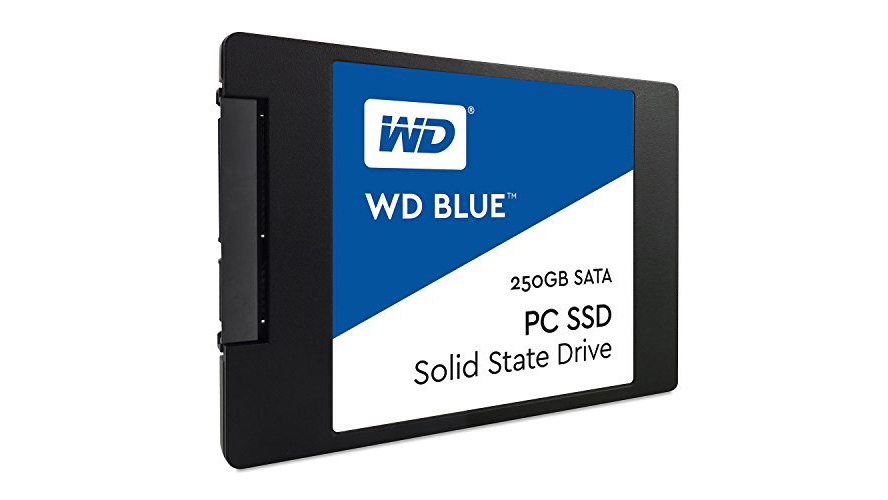
If you want to save a few bucks, but don't want to sacrifice too much in the way of performance, the WD Blue SATA SSD is a great compromise. It nearly maxes out the bandwidth of the SATA 3 interface with its read/write speeds, and the price of the 250GB version is brilliant value. Best of all, it's reliable and cost effective to run, making it the best SSD for mining in 2018.
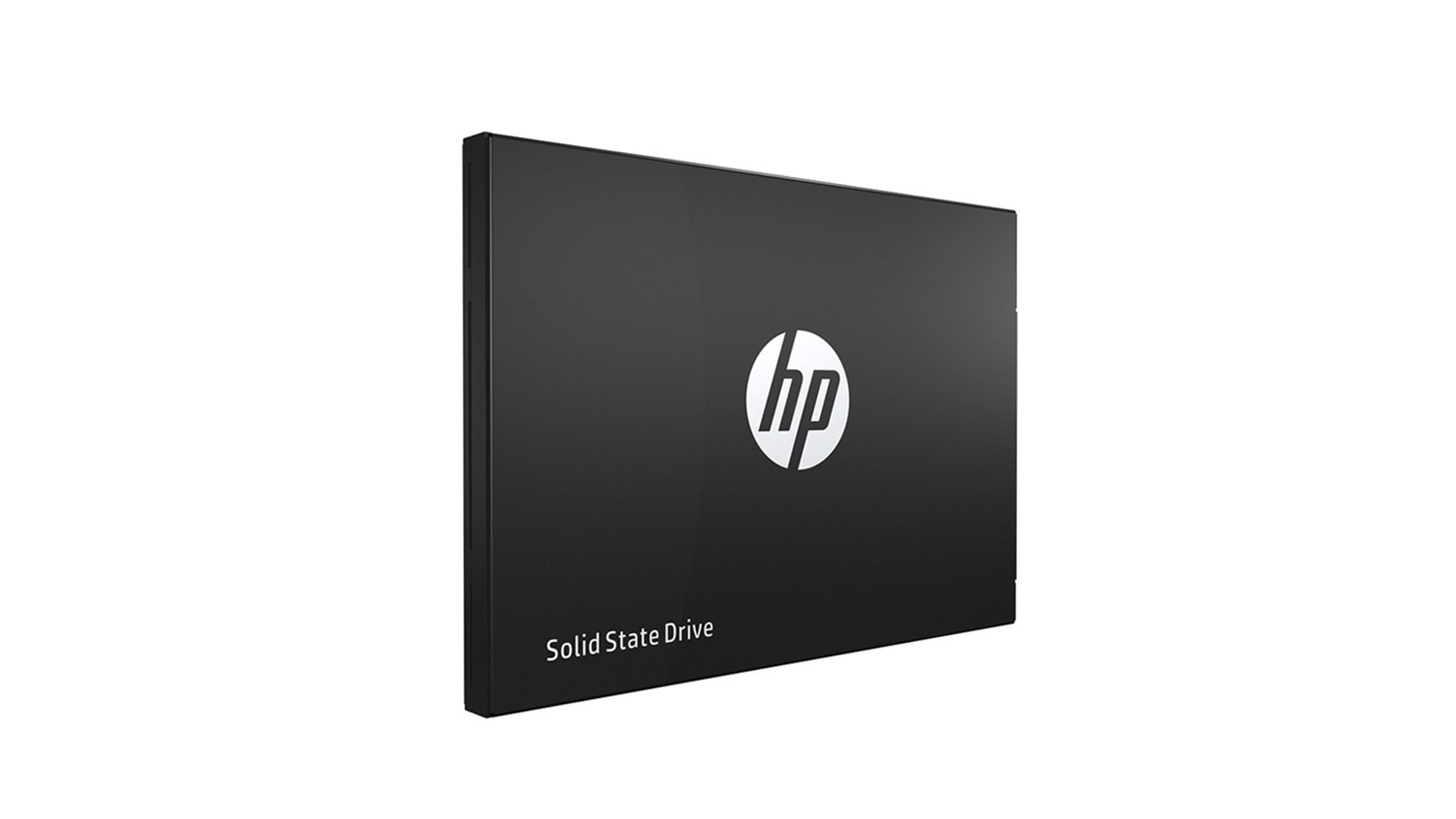
If you're going to be using an SSD for mining, then you need one that will be able to cope with being used for long periods of time, which is why the HP S700 Pro has just what you need. Its life will far exceed its warranty, offering up 2 million hours of use and up to 650 terabytes written. It's a bit more expensive than the HP S700, but its build quality is top-notch.

Although it's been superseded by the Samsung 860 Evo, the 850 Evo is an excellent choice for a mining SSD, as it features Samsung's build quality and speeds that are found in more expensive drives, with a pretty compelling price, especially as you'll only need the 120GB version for your mining rig.

The Crucial BX300 isn’t the fastest SSD you can buy, but it is affordable and chiefly reliable to boot. If you want to maximise your cryptocurrency mining profits by keeping the cost of your hardware as low as possible, then this is an excellent choice. You don't completely lose out on performance either - it’s a better performer than the pricier MX300, thanks to MLC NAND.

This is a fantastic 2.5-inch SSD that is an excellent choice for including in a mining PC. It comes with plenty of storage options, though again we'd recommend sticking with 120GB, which should be plenty. It performs really well, and while it's not the cheapest SSD on this list, it's often found in sales where you can grab it for an excellent price.
Today among the announcements of then new mid- and low-end SoC lineup Qualcomm also announced a new wearable platform dubbed the Snapdragon Wear 2500.
We don’t have many details on the platform and just interpreting what’s on the press release- but what seems to be happening here is that we’re looking at a new platform with supporting IC rather than a new SoC succeeding the Snapdragon 2100. In terms of disclosed specifications, the SW2500 matches the SW2100 as it uses a quad-core Cortex A7 as CPUs and uses an X5 modem.
The interesting thing about it is the way that Qualcomm describes the improvements – notably the 14% improved battery life of the platform. This seems to have been achieved by a new PMIC that reduces the quiescent current of the system when the SoC is sleeping. The new power amplifiers are said to improve peak power efficiency by 20%. The new power delivery is also noted to be 38% smaller than the predecessor which should allow vendors to optimise in terms of system PCB size and thus device dimensions.
The BSP (Board support package) provided by Qualcomm notably doesn’t outright run Android Wear, but rather an optimised version of Android O that is aimed at fitting the lower 512MB footprint and also had further software optimisations in terms of power management to shut off software components when not needed.
Given that Qualcomm is marketing this new platform for the kid watch segment, it’s likely that this is not the overdue “true” successor to the Snapdragon Wear 2100 that we’d be hoping for. While we’re awaiting confirmation, it also seems that the SoC on the new platform is the same one used in the 2100 so naturally the improvements are solely on the side of the supporting ICs such as the PMIC and RFFE, which would be a bit disappointing given the new naming for the platform.
The Snapdragon Wear 2500 is sampling right now and expected to come to market in the coming quarter, with Huawei expected to be the first company to come to market with a kids watch based on the platform.
A month ago we saw Qualcomm release a new “upper mid-range” SoC with the announcement of the Snapdragon 710 – the emphasis was on the fact that this was a new market tier aiming slightly below the top-tier flagship chipsets. Today, we’re seeing Qualcomm expand the traditional mid-tier and also what can be considered the low-end for smartphone devices. The Snapdragon 439 and 429 follow in the footsteps of the 435 and 425 and bring FinFET to the low-end; the Snapdragon 632 is more akin to the Snapdragon 652 as it’s now the first time we see big cores brought down to the lower mid-tier successor to the Snapdragon 630.
| New 2018 Mid & Low-End Snadpragons | ||||
| SoC | Snapdragon 632 | Snapdragon 439 | Snapdragon 429 | |
| CPU | 4x Kryo 250 (CA72?) @ 1.8GHz 4x Kryo 250 (CA53) @ 1.8GHz |
4x A53 @ 1.95GHz 4x A53 @ 1.45 GHz |
4x A53 @ 1.95 | |
| GPU | Adreno 506 | Adreno 505 | Adreno 504 | |
| Modem | "X9 LTE" Cat. 7/13 300Mbps DL 150Mbps UL 4x10MHz C.A. (DL & 2CA UL) |
"X6 LTE" Cat. 4/5 150Mbps DL 75Mbps UL 2x10MHz C.A. (DL) |
||
| Camera/ISP | Dual ISP 24MP / 13+13MP |
Dual ISP 21MP / 8+8MP |
Dual ISP 16MP / 8+8MP |
|
| Mfc. Process | 14nm FinFET | |||
Starting off with the Snapdragon 632 the new chipset is positioned as a successor to the Snapdragon 630. The 600 series suffered from quite a bit of naming confusion as we saw very large performance differences between the 65x and 66x series and the lower numbered ones such as the Snapdragon 630, 615 and 617 – this was largely due to the fact that the lower 600 series SoCs were missing the processing power of larger “big” CPU microarchitecture cores, while the 650 and up were effectively positioned as more expensive tiers.
The Snapdragon 632 now continues this lower-tiered positioning within the 600 series, but brings for the first time the performance benefit of big cores to this price segment. We find 4x Kryo 250 up to 1.8GHz – Qualcomm didn’t confirm what CPU this is based on but looking at the CPUID of an unannounced device it matched the Cortex A72 and this would also make sense given the lower Kryo 2xx naming scheme. The big cores are paired with 4x Kryo 250’s – but again we’re effectively talking about Cortex A53 cores as the little cores in the efficiency cluster.
The Snapdragon 439 and 429 are direct successors to the 435 and 425. The S435 is a 8x A53 setup with a performance cluster going up to 1.95GHz while the second efficiency cluster goes up to 1.45GHz. The S429 is a simple single-cluster with 4x Cortex A53’s up to 1.95GHz and comes with a more updated Adreno 504 over the 425’s older Adreno 308 with the largest quoted performance improvement of up to 50%.
One of the most important characteristics of these new low-end SoCs is however that they’re manufactured on FinFET nodes – Qualcomm didn’t specify exactly the foundry or exact node but we’re likely talking about 14LPP or a 16FF variant, with the possibility of Qualcomm also third-sourcing these from UMC as well. This marks a generational shift as we see Qualcomm effectively have completed a total transition to FinFET products across its whole mobile SoC product line.
A large commercial advantage of the new chips is their design compatibility; the Snapdragon 632, 439, 429 are software compatible with each other and with the existing 626, 625 and 450 platforms. Furthermore the 632 is pin compatible with the 626, 625 and 450, and the 439 and 429 are pin compatible with each other. The software compatibility means less resource investment on the part of OEMs and accelerated time-to-market for devices. In particular what seems to be very interesting here is the 632 being pin compatible with several older chips – It would be great to see OEMs be able to release quick refreshes of their devices with the new chip given that it’ll bring large performance improvements thanks to the new big CPU cores.
Overall the new mid- and low-end Snapdragons bring a generational improvement thanks to Qualcomm’s total switch to FinFET nodes across all of its line-up. The new SoC platforms are quoted be used in commercial devices released in the second half of 2018, which essentially means very soon.
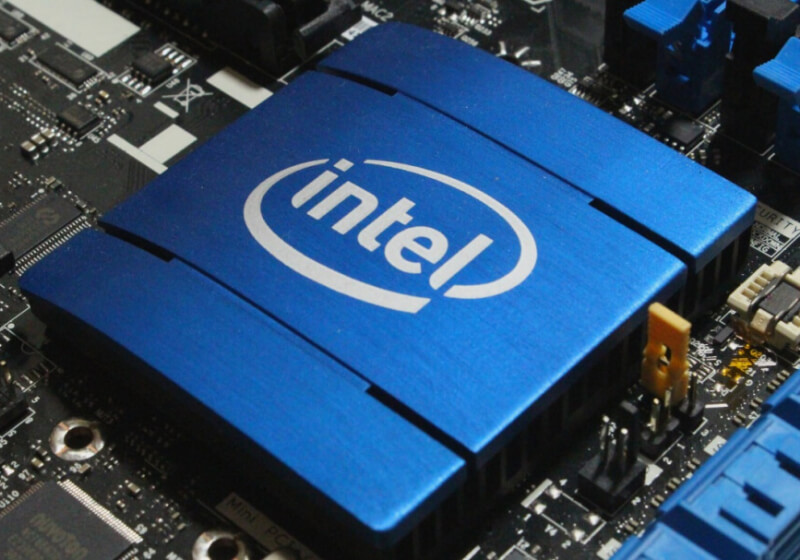


Welcome to our list of the best NAS devices of 2018. NAS - which stands for network attached storage - are external hard drives that (as the name suggests), plug into a network, rather than a PC.
This allows the NAS device - and whatever files are held on it - to be accessed by any device on the network. Most of the best NAS devices also allow you to remotely access them over the internet, so you can be on the other side of the world, and still have quick and easy access to your essential files.
The very best NAS devices can be a godsend for anyone looking for a way to optimize their data storage in the home or office. There's simply no better way to store your essential files. However, you may be wondering how to pick out the best NAS. Fortunately we here at TechRadar have put our storage expertise to use and created this list of the best NAS devices you can buy today.
NAS devices are usually platform-agnostic – meaning they’ll work with pretty much any device. It doesn’t matter if you’re running macOS, Windows or Linux – the best NAS devices will work for you no matter what device you’re working on.
Still, just like any kind of enterprise computer hardware, the market for NAS devices can be tricky to navigate – that’s why we’ve created this list of the best NAS devices on the market in 2018. Read on to find out our pick of the top NAS devices for the home and office.
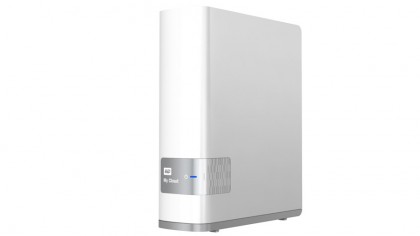
WD has achieved quite considerable success with its unashamedly consumer-friendly My Cloud products, which can stream to any DLNA-compliant device and can be accessed via mobile apps for iOS and Android.
Labeled as a 'personal cloud,' it's a NAS box by any other measure and starts at 2TB of storage (you can also get it in 3 or 4TB). As it's a one-bay unit, it can't back itself up to a drive inside the unit, but it can back up to an external hard drive via a USB port on the back.

Picking up on the 'personal cloud' theme, this unit from Seagate takes its lead from My Cloud, but it offers far larger capacities, along with dual bays for two hard drives. This allows the Seagate Personal Cloud 2-Bay NAS device to mirror the files on one hard drive to a second one, giving you protection in case one of those drives fails.
We also like the no-fuss appearance of this unit, meaning it can sit nicely under a router or on a shelf. It works with cloud accounts, including Dropbox and Google Drive, and you can also use an app to share content to streamers, including Chromecast and Roku.

The QNAP TS-251A is a fantastic NAS device that has more features than you can shake a stick – or the included remote control – at. It offers dual Ethernet ports, a HDMI out for connecting it up to a TV and respectable hardware including a dual-core 1.6GHz Intel Celeron CPU and 4GB of RAM for hardware transcoding media files.
The QTS OS lets you easily install a variety of apps, from Plex Media Server, file sharing apps and even a karaoke app, as well as run Ubuntu Linux for even more flexibility.
In short - this is a fantastic NAS device, though you'll need to buy the hard drives separately, so factor that in to the overall cost.
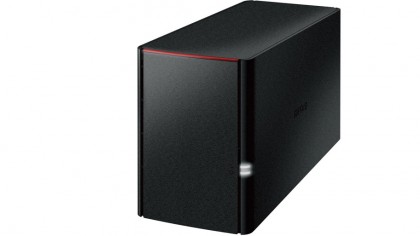
This 2TB dual-bay NAS (it's also available in 4, 6, and 8TB capacities) comes from Buffalo, the company that also makes the TeraStation line of advanced NAS units.
The key selling point of this model is that it can integrate directly with BitTorrent, meaning it can download stuff for you even when your PC is turned off. Like many of the other devices here, you can also stream to it via various devices, it's platform agnostic and you can use it as an iTunes server.

Once in a while, a product comes around that challenges the conventions of their product category. The DS1817 is one such product. Most NAS devices that occupy the ‘value’ space tend to be underpowered and have little to no room for expansion. The DS1817 flies in the face of those conventions, and allows users to fill the included eight drive bays with whatever they choose, so that you can get as much (or as little) storage as you’d like. Plus, on top of this heaping expandability, the 10GbE LAN and Quad-Core CPU mean that you’ll never be left wanting for performance.
Read the full review: Synology DiskStation DS181

This two-bay unit can create a mirrored backup of your stuff (duplicating your data on both drives), using RAID configuration. That's quite an advanced feature for a consumer box and you do pay quite a lot for that capability and WD's user-friendly presentation, including an easy-to-master, browser-based control screen.
This is a 4TB unit (6, 8, and 16TB units are also available). For extra peace of mind, you can also back the contents up to Dropbox.
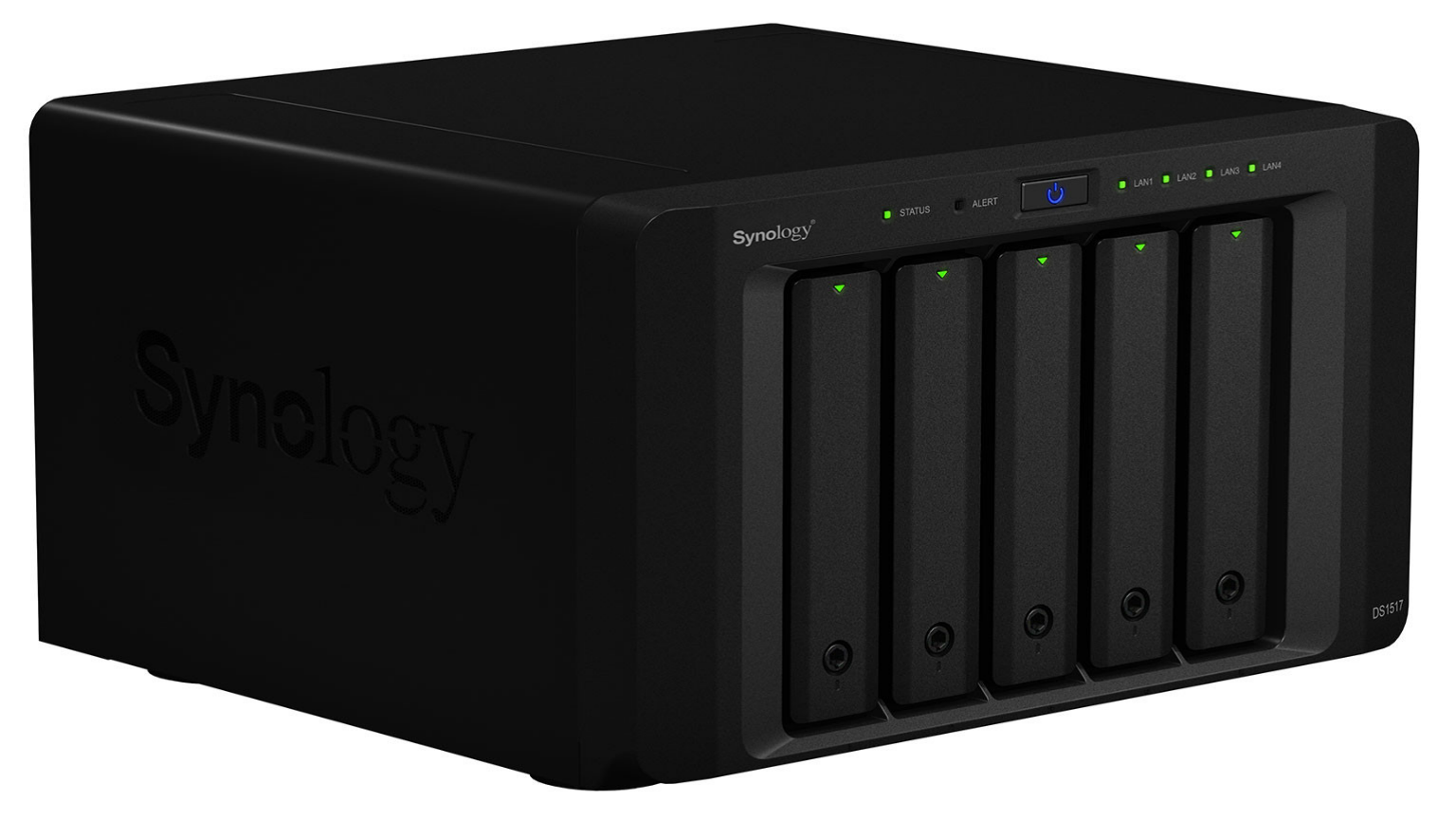
Anyone looking at purely technical aspects will instantly fall in love with the Synology DiskStation DS1517. Thanks to its quad-core CPU and up to 8GB of RAM, this NAS can reach sequential speeds of 111.4 MB/s write and 110.3 MB/s read without even breaking a sweat. When you combine that raw performance with the DS1517’s expandability, you have a recipe for a NAS that can stack up against the best NAS devices on the market. However, be aware that the DS1517 isn’t cheap, and unless you’re a creative professional, or you’re looking for a NAS for a small business, it might be overkill.
Read the full review: Synology DiskStation DS1517

As well as the RAID capabilities found in more expensive and complex NAS devices, this box is meant for small business use and supports Microsoft Active Directory. It can also act as a file server, FTP server, backup server and P2P download server.
WD's EX series are also available in diskless variants, though this price is for the 4TB version. 8TB, 12TB and 16TB are also available. If you don't need any of this extra stuff, then get the My Cloud Mirror.

If you're looking for a NAS device to help manage your backup needs, the DL4100 might be worth. taking a look at.
One of the coolest features of this device is its web dashboard that offers users options for backing up to cloud services such as Dropbox and Box. Additionally, we really liked the ability to set up SMS and email alerts in case the system failed for whatever reason.
As far as storage options are concerned, the DL4100 comes with four drive bays in your choice of four configurations. Aside from some annoying issues with wireless transfers, we found that the DL4100's 1.7GHz dual-core Atom processor and 2GB of RAM (configurable up to 6GB) performed admirably. Combine this with an easy setup and cloud connected web apps, and you have an interesting backup offering on your hands.
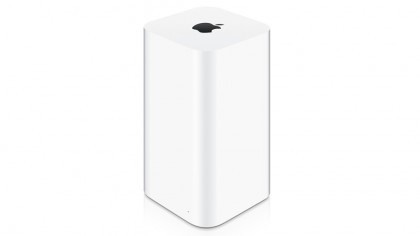
While the Apple AirPort Time Capsule does offer a great experience for Mac users, its 2 and 3TB storage options are very expensive compared to their competition. But, then this is Apple we’re talking about. Now, while it’s entirely wireless, other NAS devices don’t really need to be wireless, because you’ll always wire them directly into a wireless router for optimal performance, so the wireless functionality here doesn’t affect the way you access your files.
However, the Time Capsule feature does make it easy to setup and configure automatic backups for Mac and iOS users. So, if you’re an Apple fan that doesn’t like getting into the fine details of tech, this is a good buy despite all of the nagging flaws.
In the consumer space, we get SATA drives, mSATA drives, M.2 drives, and for the high end, U.2 drives. By contrast, the enterprise space is expanding: U.2 is a lot more prevalent than M.2, Samsung’s NF1 drives are now coming into the market, but also Intel has been discussing its new ‘ruler’ form factor to put more storage into a single server. At Computex, AIC and Intel showcased the new ‘Grays Peak’ FB128-LX platform designed for high-density flash storage using this new ruler SSD.
The ruler specification is based on Intel’s new ‘Enterprise and Datacenter SSD Form Factor’, known as EDSFF, which can enable each drive to have a PCIe 3.0 x4 or a PCIe 3.0 x8 connection to the system. The Grays Peak server in this instance uses a dual-socket Xeon combined with 36 of the new ruler SSDs, with the top variants aiming to provide 1 PB of storage into a 1U chassis by taking advantage of increased SSD length and optimal thermal environments. Current capacity puts 576 TB into 1U, giving 16 TB per drive.
Obviously having 36 drives, even with a x4 connection (such as the mechanical sample on display), equates to 36x4 = 144 PCIe lanes, more than a dual socket server can handle, so managing in the middle are a pair of PLX 8000-series PCIe switches. The demo PCB above shows the bump layouts for them and we confirmed that the system is using 8000-series and not the newer 9000-series. The number of PCIe lanes from each CPU will be even more important in the future as the drives move up to x8 connection speeds. AIC also states that the drives are hot-swappable.
We expect that Intel will pair with other OEMs for other Grays Peak type platforms in the near future as it attempts to expand its new form factor in enterprise systems.
| Want to keep up to date with all of our Computex 2018 Coverage? | ||||||
 Laptops |
 Hardware |
 Chips |
||||
| Follow AnandTech's breaking news here! | ||||||